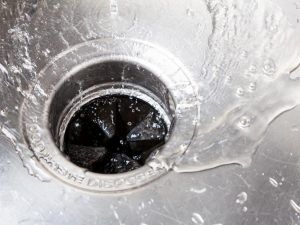How to keep ants at bay in Eugene!
April 26, 2024

Spring is here! The bulbs are blooming. The grass is growing. Bees are buzzing around. A sure sign that summer is on its way! And then there are the Ants!
No one wants them in their home! However, you could be inviting them in without really knowing it. Life is busy and it’s easy to let little things, like dishes and garbage, go to the end of the to-do list.
That overflowing garbage can or sink full of dirty dishes is an open invitation to these six-legged creatures. As they say “an ounce of prevention is worth a pound of cure!”
- A few things you can do to avoid a visit; empty the garbage frequently.
- Don’t leave dirty dishes in the sink.
- If you have a dishwasher, load dishes in it at each time you have an empty dish.
- Run the dishwasher often. This will eliminate the odor that can attract ants and other bugs. Besides, your dishes may come out cleaner if you aren’t overloading it.
- Keep counters wiped down.
- Sink clean of food debris and floors swept.
Too late? The Ants are marching all over your countertop! There are many products on the market to take care of these pests. You may even find some homemade ideas. We like to use Terro. This is a clear liquid that attracts the ants to it. Once they find it, they take it back to their nest and tell their friends about it. You may notice a temporary increase in the number of Ants at first. Since Ants love to share, it won’t be long until they disappear.
When all else fails, it may be time to call an exterminator. Keep in mind this process can be very invasive, which requires the resident’s to do a major clean up before treatments can be done. Also, pest control/removal can be billed to the residents if they are found to be inviting them in by not following the above listed preventative items. If you are a resident of a rental property, be sure to check with your landlord for a list of preferred vendors.
Happy Spring!
Share this post

Carpet Basics Q. How often should carpets be vacuumed? A. At least once a week, more often for high traffic areas. Frequent vacuuming prolongs the life of your carpet by preventing a buildup of gritty particles that can cut carpet fibers. Q. How long should it take to vacuum my carpets? A. Take your time vacuuming. Quickly vacuuming your carpets will get the surface debris. However, the dirt and dust that damages carpeting will still be down low in the fibers. Go over each section of carpeting several times. This will raise the pile of the carpeting allowing small particles to be extracted. Q. Are there areas of the carpet that should be vacuumed more than others? A. Yes, high traffic areas, as well as areas where people sit and move their feet. Vacuum these areas using crisscross patterns overlapping strokes. Also be sure to use crevice tools to clean around baseboards and hard to reach areas. Stain Removal When living with carpeting, it’s not if something gets spilled on it, it’s when will it happen? As tempting as it is to move furnishings to cover spills, it’s really not the best solution. Besides, it may look a little strange with your ottoman placed in the middle of the room with nothing else around. Many items spilled on carpet are not that difficult to remove. The most important thing to remember, clean spills up immediately after they occur! Q. Should I rub or dab carpeting while cleaning a spill? A. Don’t rub the spill! Rubbing can spread the problem to a larger area. It can also fray carpet fibers, causing a spot that looks worn. Q. Should I use commercial carpet cleaning products? A. Commercial cleaning products should be used sparingly if at all. These types of products can leave behind a film that will attract dirt in the future. Always be sure to test a small inconspicuous area of the carpet prior to use. Q. What type of rag should be used for clean up? A. Use a white towel to avoid bleeding of the color of the towel onto carpeting. You may need more than one to remove excess moisture. This can be done by stacking a few towels on the wet area and putting something heavy on top. Q. What can I use if I should stay away from commercial cleaning products? A. That is a good question! Here are some tips for some of the most common spills. Many stains like Gravy, Salad dressing, Urine and Coffee can be cleaned up using a mixture of 1 tsp. mild detergent, 1 tsp. white vinegar and 1 qt. warm water. First wipe or soak up as much of the spill as possible. Apply the solution to the spot. Soak solution and stain up with white towel. If the stain remains, repeat. Let the carpet dry and vacuum. Candle Wax & Chewing Gum: Press an ice cube against the stain. After the wax or gum harden, gently pull it off of fibers. Red Wine: When red wine is spilled on your carpet, dilute it with white wine, then clean the spot with cold water and cover with table salt. Wait ten minutes, and then vacuum up the salt. Mud: Allow the mud to dry completely and then lightly brush or scrape off as much as possible. Use the above mentioned solution to clean the mud. Repeat as necessary and dry thoroughly with white towels. Vacuum gently after carpet is dry. Tip for odors Vacuum up a small amount of baking soda into the bag of your vacuum cleaner. This will help absorb odors that could cause the air to smell stale after. Keeping your home vacuumed will expand the life of your carpeting as well as keep down dust and allergens. Happy Cleaning!

Well…you do! Renters insurance is a must for anyone who is a resident in someone else’s property. A landlord’s property insurance covers damages to a building due to flood, fire or other types of damage. This insurance doesn’t cover the resident’s personal belongings. That is what a renter’s insurance policy does. What does Renters Insurance Cover? Who pays for your stolen lap top when your home or apartment is broken into? If you don’t have rental insurance, you do! With this coverage you could receive replacement value for this item. What if the building is damaged by a fire? Your belongings are wet, covered in smoke and building debris. Renters insurance will not only pay to repair or replace personal positions, some policies will pay for a place to stay. Your cell phone and luggage are stolen out of your vehicle. These may also be covered and replaced. How much does it cost? Usually this type of coverage is inexpensive. Coverage for $15,000 of personal property coverage and $100,000 of liability coverage, could run approximately $15.00 per month. This will vary depending the type of coverage you chose and the area you live in. Talk with your insurance agent or look for quotes online.

How to Use, What to Put In & How to Clean If you have a garbage disposal, I’m sure you will agree that it is a convenient appliance to have in your kitchen. The following are some best practices for using, adding foods and keeping this handy tool clean and running strong. How to use Start by turning on a strong stream of cold water. Run the water into the disposal side of the sink. Turn the power switch to the disposal to the on position before adding any food. Add small amounts of food gradually into the disposal giving it time to grind and flush contents before adding more. When disposal has finished grinding food waste, continue to run water for a few seconds. This will flush any remaining particles down the drain and will prevent clogging. Pay attention to the sound of the disposal while grinding. This sound will change when it has completed its task indicating that it is time to turn it off. What to Avoid Grease and Oils can coat the inside of the disposal and pipes causing other foods to stick to it forming a clog. Some foods such as salad dressings & marinades have oils in them. Using cold water will help oils and fats to remain solid as they flush through. Potato peels easily stick to pipes because of their high starch content. Stringing foods like celery and artichoke leaves can wrap around disposal blades causing them to bind. Bones, nuts and pits can dull blades as well as lodge in pipes. Pasta is also a starchy food that if not flushed completely through pipes can expand and form a blockage. Nonfood items like plastic, metal and glass can jam the blades of the disposal. What can be put in the Disposal? Most leftover food items, such as meats, fruit and vegetables as well as food prep waste. Use care when disposing of coffee grounds and egg shells as these can sit in pipes causing a “slow drain” and may eventually lead to clogs. Add small amounts of these items at a time and flush with plenty of water. How to Clean Add ½ cup Baking Soda to disposal Follow with 1 cup White Vinegar, allow to set for a few minutes Pour a medium sized pan of boiling water down drain, wait 5 minutes Turn on cold water and disposal and flush for a few minutes Freshen with a small amount of citrus peels For help with unclogging or resetting your disposal, go to Mallard Properties YouTube video How To Fix a Garbage Disposal



